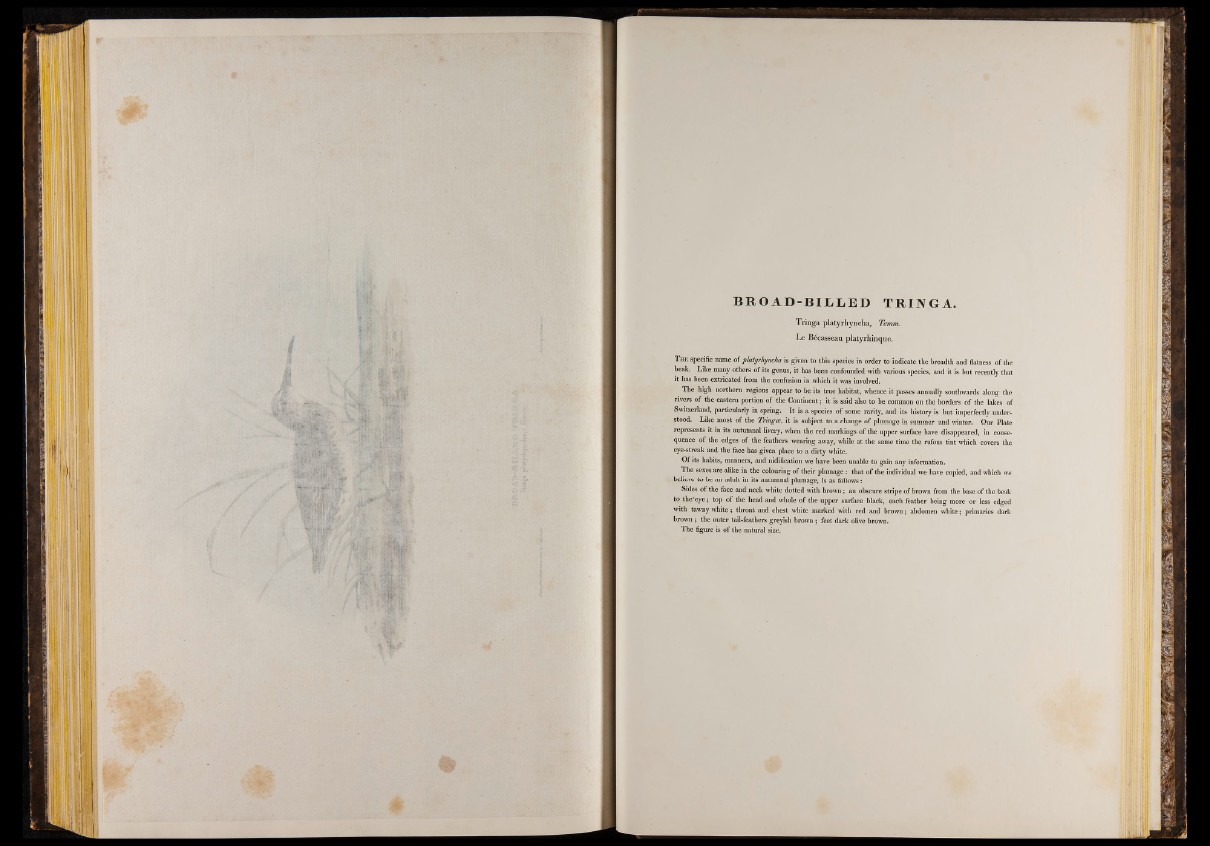
. ! H
I !
B ROAD-B I L L ED TRINGA.
T r in g a p la ty rh yn ch a , Temm.
L e Béca sseau p latyrhin qu e.
The specific name o f platyrhyncha is given to this species in order to indicate the breadth and flatness o f the
beak. Like many others o f its genus, it has been confounded with various species, and it is but recently that
it has been extricated from the confusion in which it was involved.
The high northern regions appear to be its true habitat, whence it passes annually southwards along the
rivers o f the eastern portion o f the Continent ; it is said also to be common on the borders o f the lakes of
Switzerland, particularly in spring. It is a species o f some rarity, and its history is but imperfectly understood.
Like most o f the Tnngoe, it is subject to a change o f plumage in summer and winter. Our Plate
represents it in its autuinnal livery, when the red markings o f the upper surface have disappeared, in consequence
o f the edges o f the feathers wearing away, while at the same time the rufous tint which covers the
eye-streak and the face has given place to a dirty white.
O f its habits, manners, and nidification we have been unable to gain any information.
The sexes are alike in the colouring o f their plumage : that o f the individual we have copied, and which we
believe to be an adult in its autumnal plumage, is as follows :
Sides o f the face and neck white dotted with brown ; an obscure stripe o f brown from the base o f the beak
to the'eye ; top of the head and whole o f the upper surface black, each feather being more or less edged
with tawny white ; throat and chest white marked with red and brown ; abdomen white ; primaries dark
brown ; the outer tail-feathers greyish brown ; feet dark olive brown.
The figure is o f the natural size.